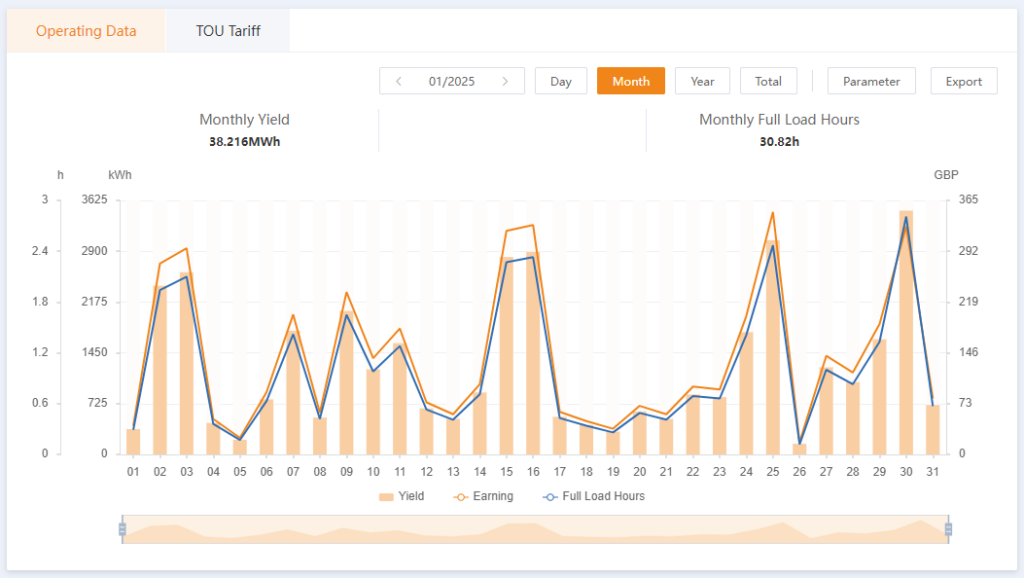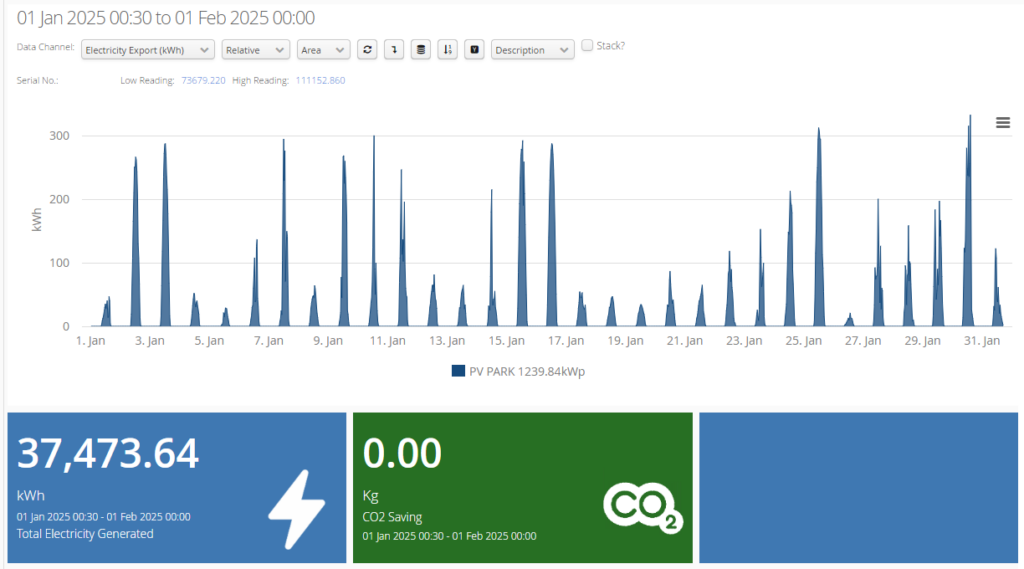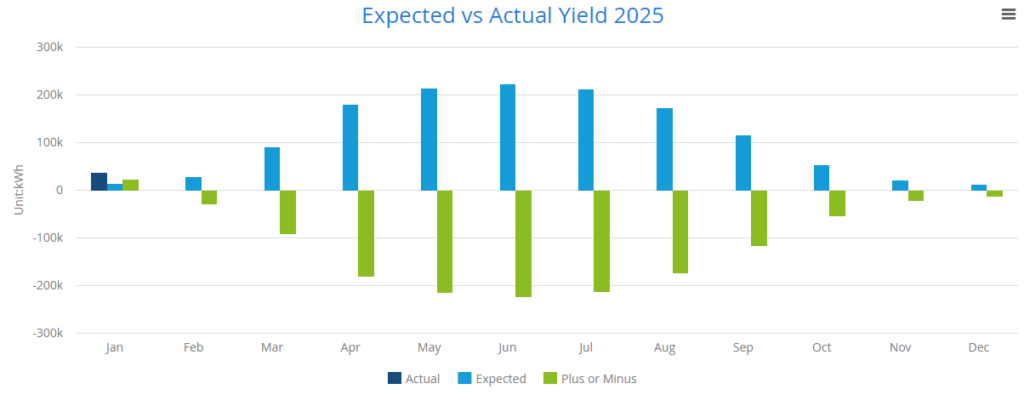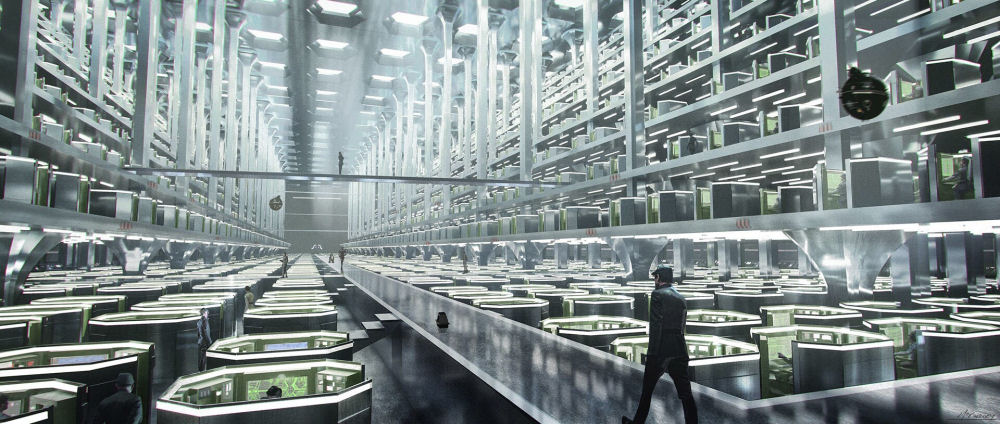Ok so January is OVER. Woohoo. This means I have a full month where my solar farm was actually operating at full capacity (well not quite…we have not replaced the missing 10 panels from the storm damage, and I suspect some strings may be turned off as a result, but its fairly minimal). Because we had our farm switched on in the middle of a month, and then had the storm damage, and also had some brief downtime for meter related stuff, there have not been long periods of uninterrupted operation so that I can analyze the data. Hopefully this is almost over and we can get to the point where the generation is steady and predictable… Anyway for those new to this blog, this is a 1.23kwp solar farm, kind of near the midlands UK. Commissioned in October 2024. here are the details: (first the Solis inverter combined data)

You can see just how variable the generation is. There have been some really wet days and plenty of cloudy ones. It is January after all, so this is to be expected. Ignore the GBP scale, its not accurate, but the kwh is. I have no idea why they bother showing it as ‘full load hours’. Who cares? Its a crazy metric. We know the theoretical full load, but how does that help us. You can’t even remove the line! Anyway, the real figure that matters is 38,216kwh. In the same period the solar in my garden generated 41kkwh. This is disproportionately low. Thats 10kwh per kwp for my home solar. The farm is 30.7kwh per kwp, so 10x the output, despite being the EXACT same panels. Why? Because we have really bad winter-shading on our home panels and the farm has zero shading by design. Shading is everything!
Now time for the meter-level (Orsis) data:

You will notice the monthly data is lower, a difference of 743kwh or 1.9% of generated output. Why? Line losses basically. We generate more power at the inverter level but by the time it goes from DC to AC and then through the ten cables to the switchgear box and gets read by the meter, we have lost 1.9%. This is higher than I would like, and I do find myself wondering how its possible to lose 743kwh just by heat. Thats running an electric heater on full blast for 10 days over the course of a month. The trouble is when you translate in your head from domestic level numbers to grid scale it all starts to seem ludicrous :D.
Of course what I REALLY want to know is how my farm is operating with regards to expectations. The Orsis UI will even show you this…but I have issues with it:

At first glance this looks AMAZING. OMG My solar farm is generating at double the expectations. Time to select the best interior/exterior color combos on a Maserati EV. But actually I think this is just WRONG. The numbers used to generate these expectations are just numbers that I think the installers entered in the Orsis UI, and I *think* they are wrong, and my best guess is that this sort of generation curve predates advances in solar panel performance. These days solar panels (especially the latest monocrystaline ones) are really good at coping with scattered cloud. 10 years ago, some cloud on a single panel would be bad news, but panels now have bypass diodes and other tricks to ensure that really bad performing areas of a single panel can be temporarily ‘switched off’ so that you can still get maximum power from the rest. The result, I *think* is that the power generation curve over time is less pronounced.
To put that another way, I think that this chart should be flatter, and will be once I have a full years data. I am not celebrating yet, and will not be able to draw real conclusions until the end of December. Obviously that will not stop me extrapolating like crazy in blog posts every month :D.
But wait! This is not the only news. I have also sent off my final response to the UK REGO scheme regulator(ofgem) about my REGO application. For anyone new to this blog, let em explain what the hell I am talking about first:
REGOs are Renewable Energy Guarantee of Origin certificates. When you own a solar/wind/geothermal/wave energy plant and generate a megawatt-hour of power (1,000kwh) then you get a REGO certificate, that proves it was renewable energy. You can then SELL these, to people like retail energy providers, or companies who want to be able to prove their power is renewable. This is not a subsidy, but a free market, and for solar farms you tend to lump in the REGOs with the sale of the power. In my case we sell the power to OVO, and they buy each REGO at a fixed price. Once I have them…
The first time I applied for REGOs I was told it couldn’t be approv4ed because the site was not finished, and when I said can be put my application on hold, they said no, we have to delete it ,and in future you cannot re-use the name, so you need a new one.
Yes, words fail me too.
 OFGEM office
OFGEM office
Anyway, my second application was responded to with a huge bunch of requests for extra data. You would not believe what they question or want clarified or what level of detail they want. It reminds me of the planning permission system, where it is 100% clear that this is not actually a process, but a game, where their success criteria is that they get to reject you. There is zero attempt at ‘good faith’ evaluation of whether or not its a solar farm, and 100% focus on looking for any minor reason to reject the application. It is awful.
I have replied with a lot of detail, and screenshots of settings, and forms and charts and so on. They seem to want evidence that the farms output is limited to 900kw (it is) but the only evidence of this is that the inverters are set to only output this amount. There is literally no other way I can prove this, and I expect yet more arguments. Its totally ridiculous, because we are basically arguing with bureaucrats, who are absolutely unaffected by how much power we export. The DNO (the distribution company ) IS happy with our inverter limits, and its their substations, transformers and cables that will explode if we are lying, so if its good enough for them… you would think this was a done deal…
I will be very happy with this ridiculous procedure is completed and we actually are being paid the correct amount for each MWH. Luckily you can back-date REGOs, so we are not actually losing out. In the meantime, this generates a ton of work for bureaucrats to argue about forms which achieves absolutely nothing. BTW this is all extra costs on your energy bill.
Expect a super upbeat blog post if it gets approved though!